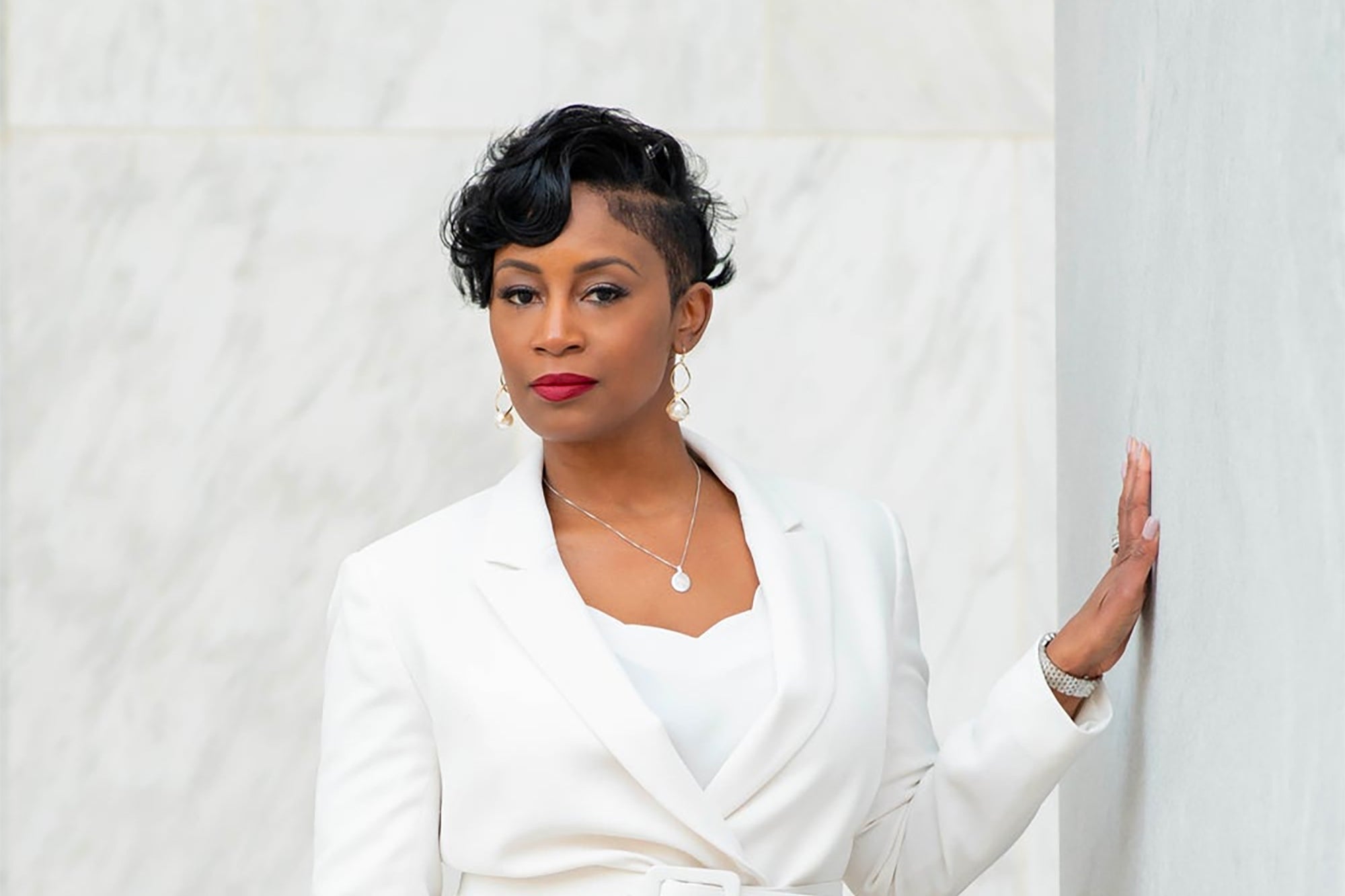Opinions expressed by Entrepreneur contributors are their own.
ESG (Environmental, Social and Governance) and sustainability became a critical part of the corporate strategy conversation over the past few years. While many companies are taking action, much of this activity is often siloed and disconnected from the broader organizational contexts. When this happens, companies miss out on tremendous opportunities that can come from ESG supporting and strengthening their business models, market positioning and strategic direction.

Bridgette McAdoo
For a better understanding of how companies can integrate sustainability into their strategy and operations, I talked to Bridgette McAdoo, who has been a leader in sustainability across several industries and sectors for over 20 years. She is currently the Global Sustainability Officer of Genesys, a California-based technology company and pioneer in the Experience-as-a-Service space. Prior to Genesys, Bridgette led corporate strategy and engagement for WWF’s Freshwater and Food goals and served as Global Director of Sustainability for KFC, where she worked internally within Yum! Brands and externally with various sustainability stakeholders on the global level.
You have been with Genesys for over a year now. How did you find it in terms of sustainability and how did it start?
Genesys has always looked at sustainability as part of their business practices. I credit that to our CEO, Tony Bates, who has been at Genesys for about three years. We also have Peter Graf as our Chief Strategy Officer, who previously served as a sustainability leader at SAP. These two executive leaders within our organization have a passion for sustainability and understand how it can impact the business. While it was triggered by our CEO and CSO, there was a desire from our employees, too. Everyone was ready for that moment to come.
From day one, I knew that we were going to establish commitments unique to our business but could also help drive the industry into more sustainable practices. We wanted to be an emerging leader and be extremely authentic in our voice.
When I started at Genesys in December 2020, I was excited to become its first global sustainability officer. This allowed me to build a strategy that our leadership could align to. One of the biggest obstacles that most practitioners have is it is never top down. Instead, it is more of a ground swell. Typically, you group employees in green teams and tell them, “We want to be sustainable.” Then they try to convince leaders to act. However, for us, this was going to be a top-down approach to not only show that we are committed, but that this is who we are as Genesys. We wanted to build a strategy that would reflect that.
Technically our group is part of the strategy function, but we look at sustainability as a fully holistic, integrated approach. Every single corporate function is involved: from IT and sales, to HR and finance. We have embraced it and tried to ensure that we can address society’s needs in an empathetic way. The core of who we are at Genesys is built on empathy. You can’t be a sustainable business and drive sustainability without being empathetic. It is a core value, and a foundational truth to who we are, our organic extension of how we are empathetic to not only our employees, but to our customers and our key stakeholders.
I spent the first six months building my team and developing our strategy. Then, established four goals across our environmental, social and governance pillars, all to be reached by 2030. This included achieving net zero by 2030. We want to touch one million lives through our product — we know that our products and services are uniquely positioned and differentiated to accomplish this, whether it is through crisis, prevention, or innovation and technology. We also want to ensure our workforce is as diverse as our markets. We are always committed to maximum privacy, security and availability of our products and technology.
But we also knew we had a lot of work to do. This is why we have set sustainability as a strategic business KPI. For example, everyone has to take their part in achieving carbon neutrality, including things like migrating from premise to cloud and more sustainable office spaces. Everyone is also expected to help us reach our goals for diversity, equity, and inclusion. For example, our real estate and facilities team has done an amazing job on our workforce of the future and ensuring that we explore virtual and flexible working frameworks.
And it is just the beginning of what we really can do at Genesys.
Related: Why ESG Conscious Companies are Resilient Companies
Now let’s talk about Yum! Brands. What was different? What was similar?
Yum! Brands is a public-facing consumer brand with issues very different from those faced by a technology software company. We had 50,000 plus restaurants in over 120 countries. That meant different regulations, consumer needs, and infrastructure capabilities, and resulting sustainability concerns.
With Yum! Brands, our primary focus was on packaging, recycling and animal welfare in nutrition and antibiotics. These issues are not material for Genesys. What I focus on at Genesys is not what I would’ve focused on at Yum! because of different material issues.
Yet the foundational truth is that we all must focus on what’s material. Whether you’re a large restaurant chain, or an emerging technology software company, software service is critical. We all have to focus on what is material. Every leader needs to ask, “What are our most material issues?” You can determine this through conducting a materiality assessment. At both Yum! Brands and Genesys, we started with materiality assessments, and despite these companies being so different due to the nature of their end product, the process was the same. We still needed to understand areas to focus our sustainability efforts. We needed to operationally address them to ensure that there is no more harm caused by our growth. While doing that, we must also ensure that sustainability, risk reduction, optimized efficiency, and maximum opportunity are achieved.
There are some things that are universal in addressing materiality. For example, we all have to focus on climate change. After COP26, we recognized that urgency is essential. It is the same for diversity, equity, and inclusion. Regardless of your product or service, we all need to ensure that there is global equitable access, and our workforces are as diverse as the communities and markets we serve. We are in an inclusive culture. We must look at how our employees, communities and stakeholders are being affected by our presence. Performing on these key issues provides us with a license to operate and grow. Regardless of industry, there are areas where we can come together thanks to shared values and interests in equitable access and climate change.
This is certainly strategy-driven way to zero in on organizational priorities when it comes to ESG. From your perspective, what should be the role of strategy in driving ESG and sustainability performance?
Strategy will always start with knowledge of exactly what is material to your business. Companies can still be overwhelmed quickly. “Where do I start? Am I supposed to do CDP? Or am I supposed to do EcoVadis? What is GRI? What is SASB?” There are so many different requirements, guidelines, frameworks, and standards. This can create a lot of confusion and angst among some sustainability professionals.
You must start with what is best for your business. You will not know that until you do the materiality assessment and understand where your risks and vulnerabilities are. It helps you to focus on the most pertinent issues that will become the basis for a gap analysis. Start by asking, “Across the areas most material to our business, where are we compared to the industry, our competitors, and where do we want to be?” You can’t lead in everything. You have to establish priorities.
At Genesys, we knew the areas we wanted to completely immerse ourselves in. Moving from premise to cloud. Changing how we thought about our workplace of the future. Adjusting the way we traveled. Addressing diversity, equity, and inclusion. But there are always other areas that need addressing, so it is important to establish a pace and sequence for yourself. After all, sustainability is an evolving journey, and solutions today may not work tomorrow.
While it is critical to look for opportunities to maximize impact, you need to make sure that they are uniquely positioned to strengthen your company. The last thing I want to do is greenwash anything, so I am not going to present anything to our business that is not good for us.
When it comes to making ESG commitments, you must be honest with yourself and be able to acknowledge that your company may not be ready to make a certain commitment. This is not bad, but rather an honest, transparent reflection of where the company is and its maturity level. For example, here at Genesys, we are technically a novice at ESG trying to measure up against others in industry and feel like we are aligned with industry best practices. At the same time, we are clear about our own “true north” that we are committed to.
Related: ESG Is the Next Frontier — a Conversation With Buro Happold’s Mike Stopka
I would say it is an unusual, almost groundbreaking way to be a novice. Genesys may not have the same track record on ESG as others, but starting with such a strong, strategically aligned foundation may help you leapfrog many leaders in the space.
There is a delicate balance of how much you say and how much you push yourself. How aspirational can you be? Any sustainability expert will agree that you want to be aspirational and inspirational, but not delusional.
We could have made a lot of assertions when we began, but it would not have served us well. We wanted our commitments to be public, transparent, and intentional. We wanted everyone to feel that they were authentic and empathetic. But we also knew that we must show progress and measure against it. You need to ensure that your business is aligned, and you understand consequences so you can constantly show progress toward your goals.
Do you have any other advice to companies that are starting out or in the middle of implementing ESG programs?
I am in a very fortunate position because our CEO and leadership are so committed to ESG. Some senior executives sometimes feel like they are fighting an uphill battle, competing for head space, prioritization and commitments. Unfortunately, some companies do not necessarily recognize the value of sustainability — and approach it as a box to check in response to all the different reporting and ranking standards. This focus on reporting can take attention away from the actual impact of ESG. It gets diluted. Sustainability suffers, both from an attraction and retention perspective, and from an innovation and execution perspective, when this focus on outcomes is lacking.
Things are different at Genesys. I like to believe it is because of our leadership and the commitment that permeates our organization. So, my advice to others embarking on the ESG journey is this: Do whatever you can to build the business case behind its value to your leadership, so that it is ingrained across the organization. Ultimately, fulfilling ESG commitments should become part of your company’s DNA.
Related: HP CIO Ellen Jackowski Explains Why ESG Is Essential to Corporate Sustainability
Credit: Source link



